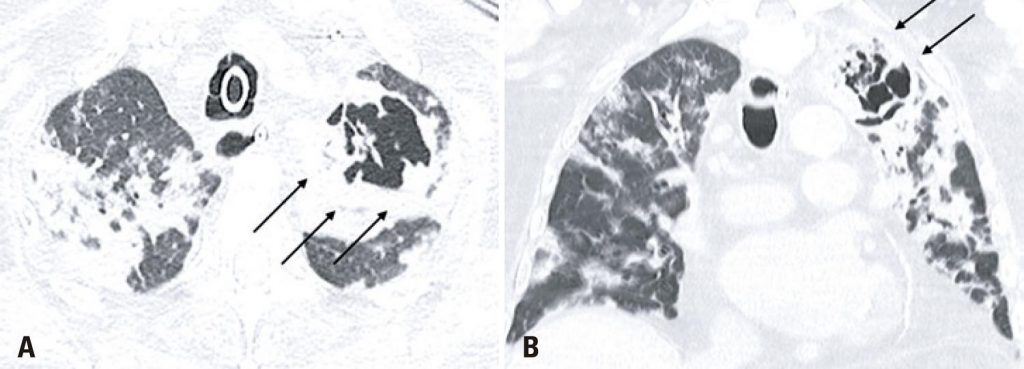einstein (São Paulo). 17/Jul/2020;18:eAI5822.
Lung cavitation in COVID-19: co-infection complication or rare evolution?
DOI: 10.31744/einstein_journal/2020AI5822
An 86-years-old male patient was admitted to the emergency department with a 1-day history of fever, dyspnea, and cough. After an assessment, there were no criteria that justified the patient’s hospitalization, therefore, he was dismissed and instructed to continue treatment at home. One week after the onset of symptoms, the patient returned with worsening dyspnea and persistent fever, which prompted his hospitalization. A chest computed tomography (CT) demonstrated typical coronavirus disease (COVID-19) findings(,) (), and the real-time polymerase chain reaction (rt-PCR) test confirmed the diagnosis. After 13 days of hospitalization, the patient experienced clinical worsening, and nosocomial pneumonia caused by Enterococcus faecalis was diagnosed (). The following CT 10 days after the diagnosis of the nosocomial infection showed multiple bilateral areas of ground-glass opacities, accompanied by septal thickening and consolidation areas, possibly related to COVID-19. There was also an excavated new lesion in the left upper lobe (). A new rt-PCR test was still positive for COVID-19 on the same day of this last chest CT scan.
[…]
3,956

